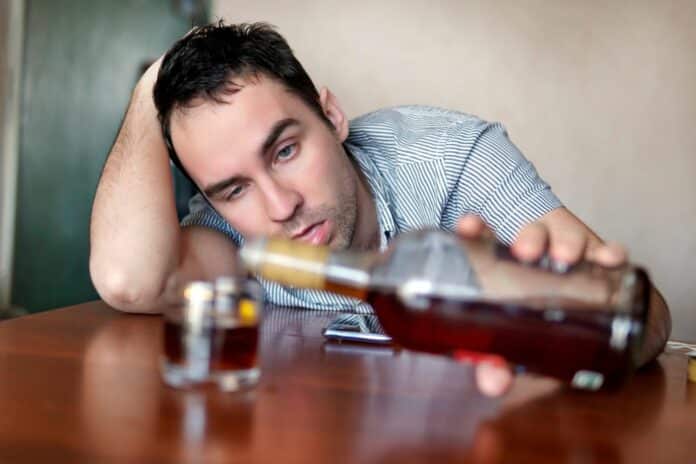The dry January movement may have ended, but sales for non-alcoholic drink alternatives haven’t ended; in fact, neither have the sales of these beverages. Every year, sales grow by 20%. And for the country’s overall health, it’s a great idea. For the man or woman with alcohol addiction, not so much. Mocktails, beer, and wine are all healthier choices. They’re potential reminders that the recovering person is abstaining simultaneously.
Dr. Molly Bowdring has been researching this issue. She works with patients struggling with alcohol. “A lot of them have been dabbling in non-alcoholic options,” She said.
Bowdring said, “We do know from some laboratory studies that non-alcoholic drink options can help people reduce their alcohol consumption, especially people with addiction. People who drink alcohol-free beer versus alcohol beer drink about 30 percent less. And the people don’t have that much difference in their brain response between the cues they get. So, alcohol-free beer versus alcohol beer. Or tonic water with versus without alcohol in it.”
Bowdring and her team conducted an online survey of non-alcoholic drinkers to learn more. Their findings were published in the journal Addiction.
Dr. Bowdring was asked to explain how alcohol alternatives might influence those who were fighting addiction. Her responses have been edited slightly for brevity and clarity.
Dr Bowdring decided to conduct this survey after hearing from several clients with alcohol use disorder. They told her that they were trying non-alcoholic drinks to help them drink less or stop altogether. She noticed there weren’t any guidelines on whether this was a good idea or not.
These discussions happened around the same time as a growing trend of people wanting to drink less or quit alcohol altogether.
As an addiction specialist, she supports movements like Dry January that encourage moderation or abstinence from alcohol. Our culture often glorifies alcohol, so it’s positive to see more people questioning their drinking habits. Having a supportive community during lifestyle changes is crucial.
Regarding non-alcoholic beverage use in people with addiction, present studies mainly focus on the general population. However, for those with alcohol use disorder, these drinks may have different effects. While some might find non-alcoholic options helpful for socializing or enjoying the taste of alcohol without the adverse effects, they can also trigger cravings for absolute alcohol due to their similarity in taste, appearance, and branding.
Researchers conducted two online surveys using a platform called Prolific. The first survey had 1,906 respondents, of which about 30% reported using non-alcoholic beverages in the past year. From this group, 466 participants took part in our second survey.
They collected information about their demographics, how often they drank alcohol and non-alcoholic beverages, and why they consumed them. The top reasons for choosing non-alcoholic drinks were to avoid adverse alcohol effects like hangovers and for better health. Mainly, the fifth most common reason was to cut down or quit alcohol altogether.
Regarding people with alcohol use disorder, researchers couldn’t confirm diagnoses. However, they used a screening method to identify those at risk. They found that those who screened positive were more likely to drink non-alcoholic beverages to cut back on alcohol, and about two-thirds reported drinking less alcohol as a result. But they didn’t see any difference in alcohol use severity based on the amount of non-alcoholic drinks consumed among those who screened positive.
It shows that although people with alcohol use disorder reported drinking less alcohol when consuming non-alcoholic beverages, their overall alcohol use severity didn’t decrease. This suggests the need for studies using objective measures of alcohol consumption rather than self-reporting. One proposed study involves providing participants with portable breathalyzers to monitor alcohol intake and tracking non-alcoholic beverage consumption.
For those with alcohol use disorder, it’s essential to be aware that some non-alcoholic drinks contain small amounts of alcohol. Additionally, consider how these drinks affect alcohol cravings. Reflect on whether consuming non-alcoholic beverages increases or decreases cravings. If it leads to increased cravings, it may not be helpful. The impact of these drinks varies from person to person.
Dr. Bowdring also recently produced a podcast with the journal Addiction for further insights.
Non-alcoholic drinks could be an option for people with alcohol problems who want to avoid regular alcohol. However, according to this study, they might not help much in actually reducing how much alcohol someone drinks.
More research is needed to understand how non-alcoholic drinks and alcohol use are connected better. This could help find better ways to deal with alcohol-related problems.
Journal reference:
- Molly A. Bowdring, Denis M. McCarthy et al., Non-alcoholic beverage consumption among US adults who consume alcohol. Addiction. DOI: 10.1111/add.16452.
